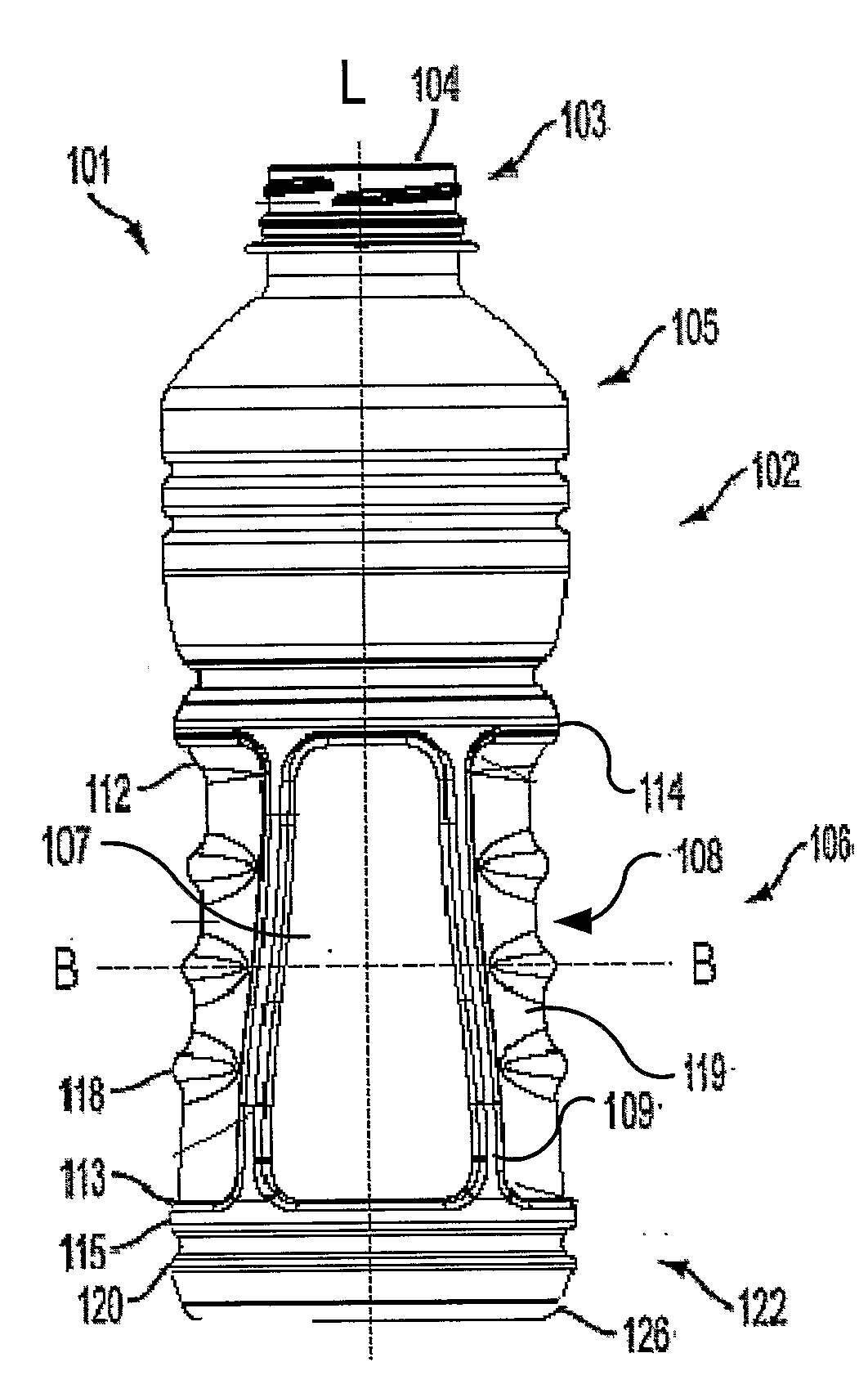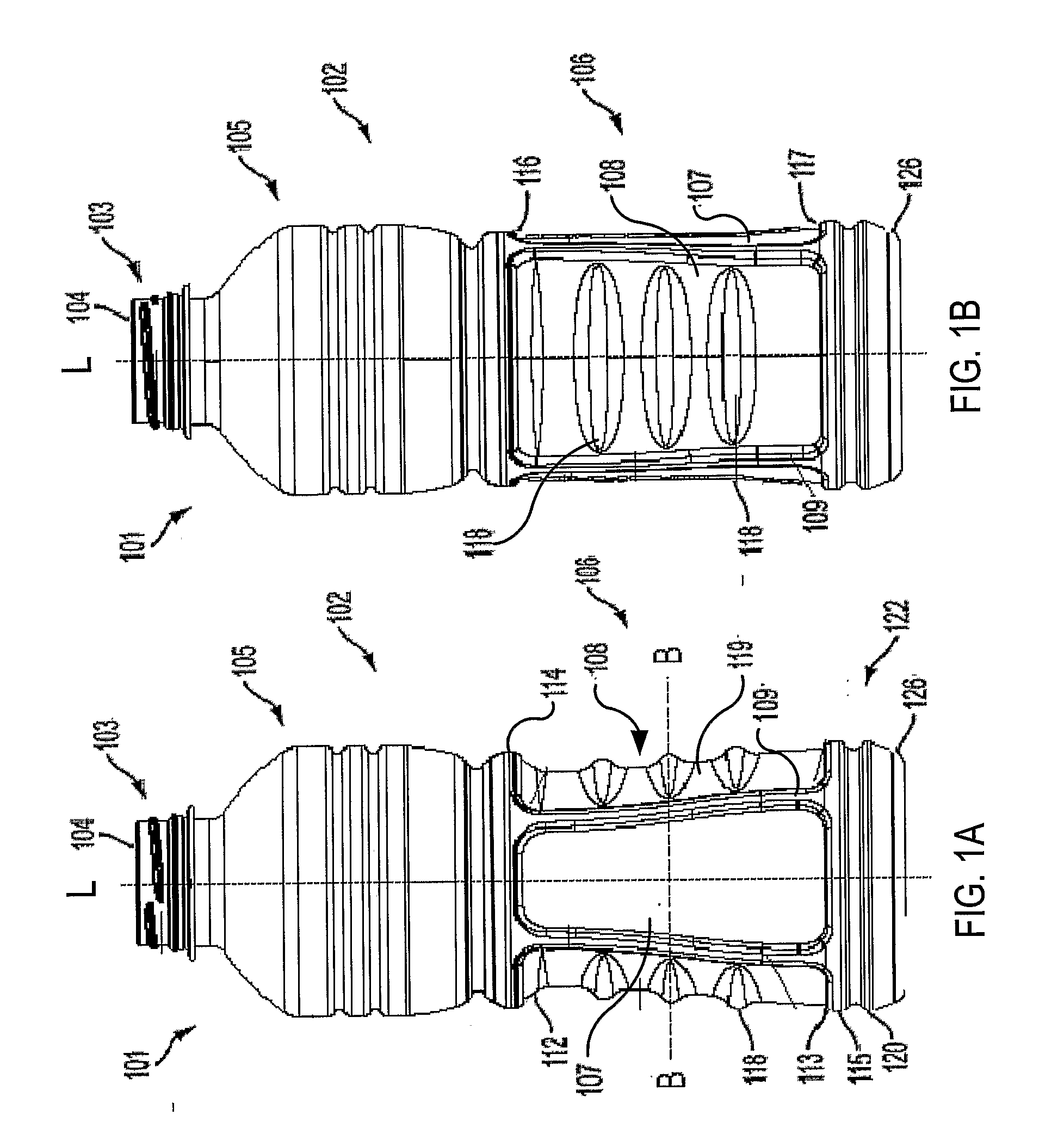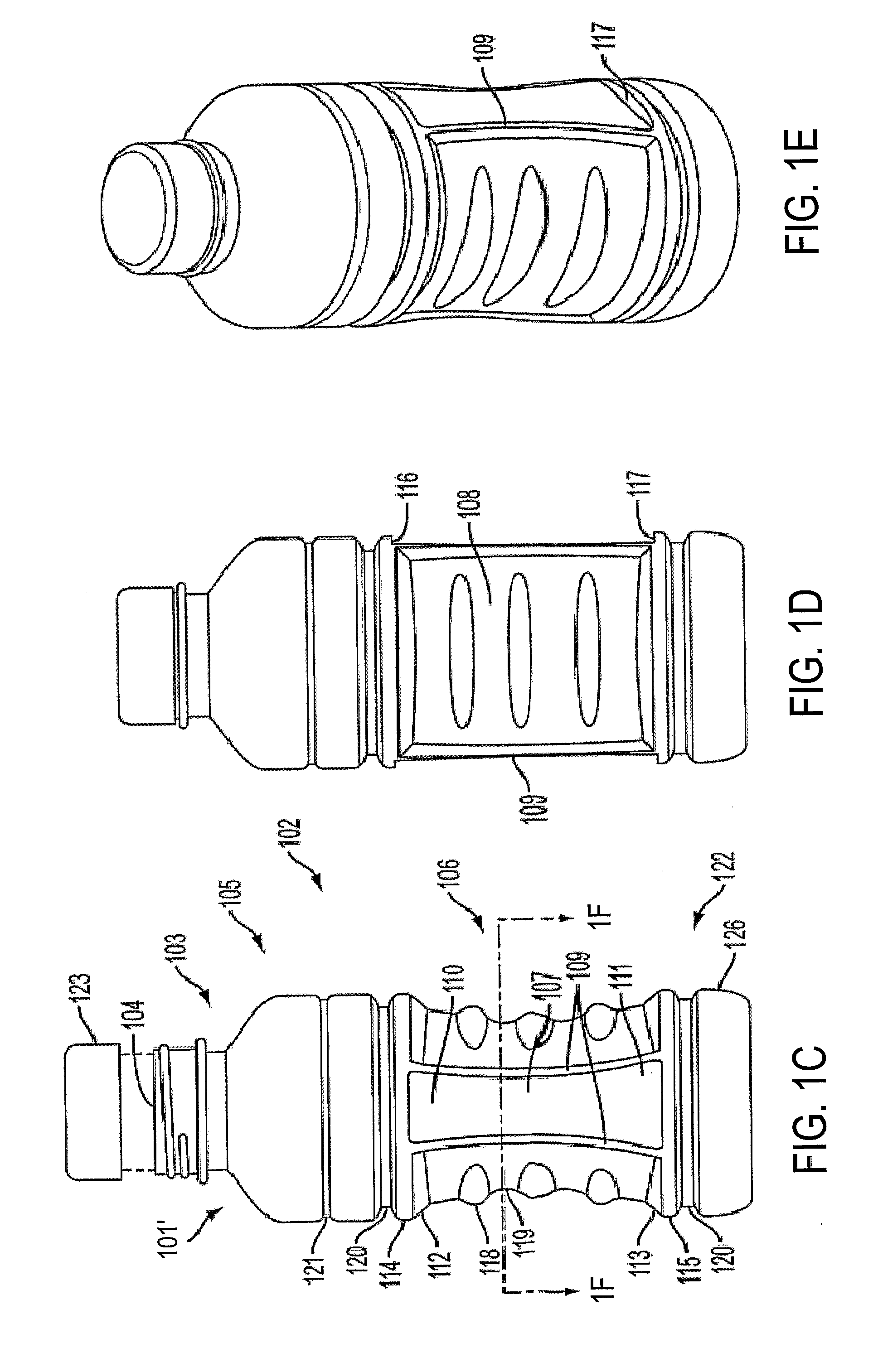Pressure Container With Differential Vacuum Panels
a vacuum panel and pressure container technology, applied in the field of plastic containers, can solve the problems of partial evacuation of the container, distortion of the container, significant mechanical stress on the structure of the container, etc., and achieve the effects of reducing the weight of the container, improving the dent resistance and resistance to torsion displacement, and controlling the overall response to vacuum pressur
- Summary
- Abstract
- Description
- Claims
- Application Information
AI Technical Summary
Benefits of technology
Problems solved by technology
Method used
Image
Examples
Embodiment Construction
[0047]A thin-walled container in accordance with the present invention is intended to be filled with a liquid at a temperature above room temperature. According to the invention, a container may be formed from a plastic material such as polyethylene terephthlate (PET) or polyester. Preferably, the container is blow molded. The container can be filled by automated, high speed, hot-fill equipment known in the art.
[0048]Referring now to the drawings, a first embodiment of the contained of the invention is indicated generally in FIGS. 1A and 1B, as generally having many of the well-known features of hot-fill bottles. The container 101, which is generally round or oval in shape, has a longitudinal axis L when the container is standing upright on its base 126. The container 101 comprises a threaded neck 103 for filling and dispensing fluid through an opening 104. Neck 103 also is sealable with a cap (not shown). The preferred container further comprises a roughly circular base 126 and a b...
PUM
 Login to View More
Login to View More Abstract
Description
Claims
Application Information
 Login to View More
Login to View More - R&D
- Intellectual Property
- Life Sciences
- Materials
- Tech Scout
- Unparalleled Data Quality
- Higher Quality Content
- 60% Fewer Hallucinations
Browse by: Latest US Patents, China's latest patents, Technical Efficacy Thesaurus, Application Domain, Technology Topic, Popular Technical Reports.
© 2025 PatSnap. All rights reserved.Legal|Privacy policy|Modern Slavery Act Transparency Statement|Sitemap|About US| Contact US: help@patsnap.com



